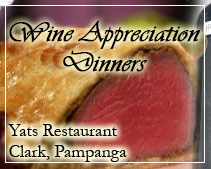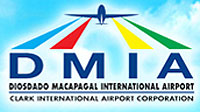All about Pampanga, Philippines – 11July21
THE EARLIEST settlers of this province already called their thriving communities Pampanga, after the river (that the Spanish colonizers only later named as the Rio Grande de la Pampanga) on the banks (pampang literally means “river bank”) of which the first Kapampangans (pioneering Malays and Indonesians) established and nurtured their way of life, industry, governmentā in short, civilization.
During the Spanish regime Pampanga was already considered as one of the richest Philippine provinces. Even Manila and surrounding regions were then very much dependent on Pampanga’s agricultural, fishery, and forestry products as well as on the supply of skilled workers and breed of courageous, intelligent, spiritual, and artistic nation builders.
Up to this day, Pampangaā the place, its people, and their passionsā continue to make an indelible mark on the country’s unfolding social, cultural, and economic tapestry.
Pampanga is best known for its cuisineā a rich blending of many racial influences (Malay, Chinese, Spanish) adapted to indigenous resources of land and waterā and for the culinary expertise that its people proudly exhibit, earning for the province the appellation, “The Culinary Center of the Philippines.” No other people in this country are so palatably profuse in serving the fruits of their labor in celebration of not only the positive events in their lives (such as marriages, births, reunions, good harvests, and victories) but even life-challenging episodes (to honor the dead or to recall the lessons of defeat or calamity).
The religiosity of the Kapampangan is a feat to match. Town churches still retain much of their original magnificence because of the people’s dedication to preserve these over the centuries or rebuild them from the ravages of wars or natural catastrophes. The expression of faith in the province peaks in surreal proportions during the lenten seasonā when streets teem with flagellants, barangays are filled with the strains of the puni(venue of the pabasa, the singing or chanting of the Biblical passion of Christ), and the capital City of San Fernando is thronged by devotees and tourists to witness the annual re-enactment of the crucifixion of Jesus Christ.
The Kapampangans’ innate good nature, patience, and fine sensibilities easily show in their crafts and trade. A lot of skill and soul goes into the execution and completion of the giant Christmas lanterns of the capital City of San Fernando, the potteries and jars of Sto. Tomas, the knives and bolos of Apalit, the wood carvings and furniture of Betis, the rattan-woven products of Angeles City, the religious sculptures of Macabebe, and so on.
Because of its fertile land, Pampanga produces the best and biggest yield of rice, corn, sugar cane, vegetables, and fruit crops in these parts. While its waters (creeks, swamps, springs, fishponds) are a prolific source of tilapia, milkfish, mudfish, and prawn. Complementing such bounty are its vast natural resources (forestlands and clay, sand, and gravel deposits), from which are drawn ideal raw materials for most of the province’s and the country’s vital building and infrastructure needs.
While the picturesque landscape and clean environment attract local and foreign vacationers and tourists year-round to the province’s many nature and recreation parks, such as the Arayat National Park and its picnic and swimming facilities, the Candaba swamps for migratory birdwatching, the rugged natural terrains of Porac, and the breathtaking hotspring scenery in Sapangbato, Angeles City.
This is not to say, though, that Pampanga is not without modern recreational amenities, for it houses a booming night life and cosmopolitan haunts like world-class hotels, resorts, casinos, duty free shopping, and golf courses.
Finally, blessed with a strategic location right at the heart of growing markets in the Asia Pacific-Regionāa given advantage in today’s global trade and industrializationā Pampanga is up to the challenge of becoming one of the centers of industrial and economic activities in the Philippines. With the presence of an educated, skilled and highly trainable English speaking manpower at competitive rates, excellent infrastructure support, peaceful environment, and a development growth propelled by the strong performance of traditional manufacturing sectors of furniture, ceramics, garments, and handicrafts in the export market, the province is without a doubt a viable investment and business area.
View Larger Map
PAMPANGA: DEMOGRAPHY
PAMPANGA SITS at the heart of Central Luzon. It is bounded on the north by Tarlac and Nueva Ecija, Bulacan on the east, on the southwest by Bataan, and on the west by Zambales. Its total land area (representing 12% of Central Luzon’s) is 2,180.68 square kilometers or 218,068 hectares. The terrain is relatively flat with Mount Arayat as the only distinct mountain.
Political Subdivision. Pampanga is composed of 20 municipalities and two cities. It is subdivided into four political districts, as follows: First District: Angeles City, Mabalacat, and Magalang; Second District: Floridablanca, Guagua, Lubao, Porac, Sasmuan, and Sta. Rita; Third District: Arayat, Bacolor, Mexico, Masantol, and the capital City of San Fernando; Fourth District: Apalit, Candaba, Macabebe, Masantol, Minalin, San Luis, San Simon, and Santo Tomas.
Population. The province has a total population of 1,911,951 as of 2007. Angeles City is the most populated, followed by San Fernando, Mabalacat, Lubao, Guagua, and Mexico. The province’s percent growth rate (PGR) per annum for the period 1995-2000 is 2.99% compared to 1.35% for 1990-1995.
Languages/Dialects. Kapampangan, English, and Tagalog are widely spoken and understood in the province. Although Tagalog, Ilocano, Lineyte-Samarnon (Waray), Pangasinan, Cebuano, Bicol, English, and Hiligaynon (Ilonga) are also used.
Climate. Pampanga has a wet season and a dry season. The wet or rainy season usually begins around May and lasts, along with a sweep of typhoons, through October. The rest of the year is dry. It is warmest from March to April and coldest from December through February.
Major Industries. Farming, fishing, manufacturing, handicrafts, poultry, swine, and food processing industries are the chief sources of livelihood in Pampanga. The fertile plains are suitable to sugar cane, rice, corn, vegetables, and fruit trees. Rivers, streams, and fishponds abound with milkfish (bangus), carps, catfish, shrimps, crabs, and other marine products.
Availability of well-trained human resources, good roads and other infrastructure, modern telecommunication systems, and abundant supply of raw materials and power attract many manufacturing and commercial firms to base their operations in this province. Many regional government offices and banking institutions are strategically located in Pampanga.
PAMPANGA: A BRIEF HISTORY
THE SPANISH conquerors had it easy organizing Pampanga in 1571. The inhabitants already led a highly civilized life, had a system of government, practiced farming techniques, and traded with Chinese and other Southeast Asian neighbors.
These intelligent, refined and highly-skilled people called themselves (and their language) Kapampangan, tracing their descent to pioneers of their river bank (“pampang” or “pang-pang”) settlements who came from Indonesia as early as 300 to 200 B.C. and, in mass exodus in the 11th through 12th century, from the Malayan Peninsula.
On December 11, 1571 (now celebrated as Pampanga Day), the colonial administration under governor general Miguel Lopez de Legaspi declared Pampanga as the first Province of Luzon.
At that time, its territory included parts of present-day Bulacan, Nueva Ecija, Bataan, Zambales, Tarlac and Pangasinan. The Pampanga empire extended all the way from Manila up to Cagayan. Later on, the creation of other Central Luzon provinces absorbed parts of Pampanga, reducing the province into its present area.
Pampanga was one of the first eight Philippine provinces that revolted against Spain in the late 1800s. The more than two centuries of Spanish rule that turned extremely abusive, corrupt, and exploitative drove Kapampangans, by nature a hospitable and peace-loving people, to even organize their own provincial government headed by a revolutionary governor.
Many Kapampangans joined up in the struggle for Philippine Independence, and many of their leaders were arrested, tortured or executed by the Spanish authorities. It was in what is now Angeles City where the seat of the short-lived Philippine Republic was established by General Emilio Aguinaldo.
Since the early 20th century, the province has been a hotbed of agrarian troubles, mainly because its estates were under a few but powerful landlords. During World War II, Pampanga was the base for a guerrilla unit known as “Hukbalahap,” which bravely resisted the Japanese army. The Huks later formed the nucleus of local communist insurgency after the war, but it was suppressed in the early 1950s. These communist insurgents resurfaced as the New People’s Army during the country’s turbulent years of dictatorship under President Ferdinand Marcos.
What took decades for nationalists to have US Air Forces expelled from Clark Air Base, Mt. Pinatubo’s eruption in 1991 effectively dealt in merely a matter of days. But the cost on the province itself was staggering, with Angeles-Porac-Mabalacat and Bacolor areas hardest hit.
Indeed, several communities in the path of lahar were transformed into “no man’s land,” as farmlands were scorched, and houses, churches, schools, and historical landmarks were either washed out or buried in sand.
Still, the post-Pinatubo rehabilitation process proved the Kapampangan’s hardy nature. In just a few years Pampanga bounced back to life: its infrastructure restored, its livelihood flourishing anew, and its people picking up from were they leftāpreserving and expressing their uniquely colorful culture and magnifying their many valuable contributions to nation-building.
PAMPANGA: TOWNS & CITIES
Angeles City, Pampanga: Profile & Brief History
Angeles City became a chartered city in 1964. Much of its economy then depended on trade and services that catered to U.S. Air Force personnel based in Clark Field. Today local commerce, culture, and cuisine color life in Angeles City… [More]
Apalit, Pampanga: Profile & Brief History
The town of Apalit is renowned for its weaving and metal industries. It is also the site of the annual colorful traditional fluvial parade (since 1844) in honor of St. Peter, its patron saint. The shrine of the ivory image of St. Peter, called ‘Apung Iru,’ is venerated by the townspeople the whole year round… [More]
Arayat, Pampanga: Profile & Brief History
Arayat is nestled at the foothills of Mt. Arayat, home of the beautiful fairy, ‘Mariang Sinukuan,’ who, according to legend, protects the mountain’s flora and fauna… [More]
Bacolor, Pampanga: Profile & Brief History
Bacolor is home to the oldest vocational school in the Far East the Escuela de Artes y Oficios de Bacolor, which was established on November 4, 1861. The school is now the present-day Don Honorio Ventura College of Arts and Trades. Also, one of the Philippines’s oldest churches, the San Guillermo Parish Church, was built in this town in 1754… [More]
Candaba, Pampanga: Profile & Brief History
Candaba is known for its rich farmlands, where sweet watermelons are grown, and for its wide and scenic swamps, the habitat of mudfish and gigantic catfish… [More]
Floridablanca, Pampanga: Profile & Brief History
Floridablanca is the second largest producer of rice in the province. It is also noted for its sugar farms. Pampanga Sugar Mills, Inc. is located here. The town also hosts Basa Air Base of the Philippine Air Force… [More]
Guagua, Pampanga: Profile & Brief History
Guagua is the hub of trade and commerce in the second district of Pampanga. It is also the seat of learning in the said district, with a considerable number of schools, both private and public, offering elementary, high school, college, and vocational education…[More]
Lubao, Pampanga: Profile & Brief History
Lubao is noted for rice, sugar cane, fish, and sampaguita. The first printing press in the country was set up in the town by the Augustinian friars… [More]
Mabalacat, Pampanga: Profile & Brief History
Mabalacat became a first class municipality in July 1996. One barangay, Marcos Village, is inhabited by Negritos who live in bungalow houses and speak broken English. Its land of 15,262 hectares is more than double that of Angeles City’s… [More]
Macabebe, Pampanga: Profile & Brief History
Macabebe is historically known throughout the archipelago for its cloth traders and for the bravery of its soldiers under Rajah Soliman… [More]
Magalang, Pampanga: Profile & Brief History
Magalang prides itself of having one of the oldest agricultural school, a weather observatory and research station established by the Spaniards in the late 19th century. The Pampanga Agricultural College is located at the foot of Mt. Arayat… [More]
Masantol, Pampanga: Profile & Brief History
Masantol used to be called San Miguel and was once a part of Macabebe. It is predominantly a fishing town… [More]
Mexico, Pampanga: Profile & Brief History
Mexico is located 4.5 kilometers from the capital City of San Fernando. It has a total land area of 117.41 square kilometers. Sweet chico fruits abound in this town… [More]
Minalin, Pampanga: Profile & Brief History
Minalin is dubbed as the ‘Egg Basket of Luzon’ because of its large-scale poultry industry, producing millions of chickens and eggs that reach millions of Philippine homes and restaurants… [More]
Porac, Pampanga: Profile & Brief History
Located in the northwestern part of Pampanga, Porac is geographically the largest Pampanga town (343.12 square kilometers). It is 26 kilometers from the capital City of San Fernando. The town is a mineral tamping ground and primary source of granite…[More]
San Fernando, City of, Pampanga: Profile & Brief History
The City is famous for its original Christmas lanterns brought about by the creativity and craftsmanship of the Fernandinos… [More]
San Luis, Pampanga: Profile & Brief History
San Luis is located 13.0 kilometers away from the capital City of San Fernando. The predominantly agricultural town has a total land area of 56.83 square kilometers… [More]
San Simon, Pampanga: Profile & Brief History
Although San Simon is primarily a farming town, it attracts business and investments because of the presence of important four industrial corporations… [More]
Sasmuan, Pampanga: Profile & Brief History
Sasmuan, which used to be known as Sexmoan, is an historic town. It is one of the oldest communities and the site of the first church in the province built by Augustinian priests… [More]
Sta Ana, Pampanga: Profile & Brief History
Residents of Sta. Ana are known for their spiritually and kindness. They are ready to help anyone more that they can afford. The town is basically a farming area, with 3,056.20 hectares of its total land area dedicated to farming… [More]
Sta Rita, Pampanga: Profile & Brief History
Sta Rita is popular for the turones de casoy delicacy. It is chiefly a farming town…[More]
Sto Tomas, Pampanga: Profile & Brief History
Sto. Tomas, which used to be a portion of San Fernando, had its Catholic Church erected in 1767. It is known for its pottery industry, its beautiful women, the delicious food they prepare, and for their joyful ‘Sabado de Gloria’ celebration.
THE KAPAMPANGAN REGION
THE KAPAMPANGAN Region is currently comprised of the entire province of Pampanga; Tarlac City and the towns of Bamban, Capas, Concepcion, La Paz, and Victoria in Tarlac; San Miguel in Bulacan; Cabiao in Nueva Ecija; and the towns of Dinalupihan and Hermosa and two linguistic island barrios, Mabatang and Kalagiman, in Bataan.
Source: http://eksite.com/x.html?q=http://eksite.com/ek.wiki.html
Residents or Manila travel out of town to head north to Pampanga to relax, unwind and spend a few nights in the new hotel rooms situated right on the lake of Clearwater Resort in Clark Airbase. Many visitors and tourists enjoy the feeling of waking up by the lake. The sunrise produces a spectacular sight with the sunlight reflection on the calm surface of the three-hectare fresh water lake of this famous resort in Clark.
The safest getaway destination vacation spot near Manila convenient safe and accessible is Clearwater Beach Resort in Clark Pampanga, great for family bonding, hang out to unwind and relax near lake and trees, camping too.
When in Clark, make plans to relax and enjoy an evening at The London Pub located in Mimosa Leisure Estate of Clark Freeport Zone. This is where all the local executives, local and foreign tourists gather after a full day of fun or work.
This web site contains articles and information that will be helpful to visitors, residents and tourists traveling out of town from Manila on a short getaway to Subic, Angeles City, Pampanga and Clark Philippines. There are several web sites that contain information that might also be pertinent to what is happening in North Luzon.
For assistance with organizing and planning weddings and garden receptions, log on to http://www.PhilippinesWeddingVenue.com
For assistance with lodgings, accommodations, hotels and resorts near Manila in Subic, Pampanga, Angels City and Clark Philippines log on to http://www.HotelClarkPhilippines.com
While in Clark, one might as well add to the itinerary a visit to the famous Clark Wine Center, the largest wine shop in Philippines which offers over 2000 selections of fine vintage wine from all wine regions, vintages spanning over 50 years covering all price ranges.
http://www.ClarkWineCenter.com
If this article about Clark is useful to you, please click here to contact us to tell us what more you wish to know about this article or Clark Philippines, which can be something about Clark investment, about Clark resorts, about Clark Swimming and Leisure or simply general news about Clark.
Please send questions to Editor@ClarkPhilippines.com. Leave your name, email address, contact numbers and we will get back to you as soon as possible. Information received will not be disclosed.













